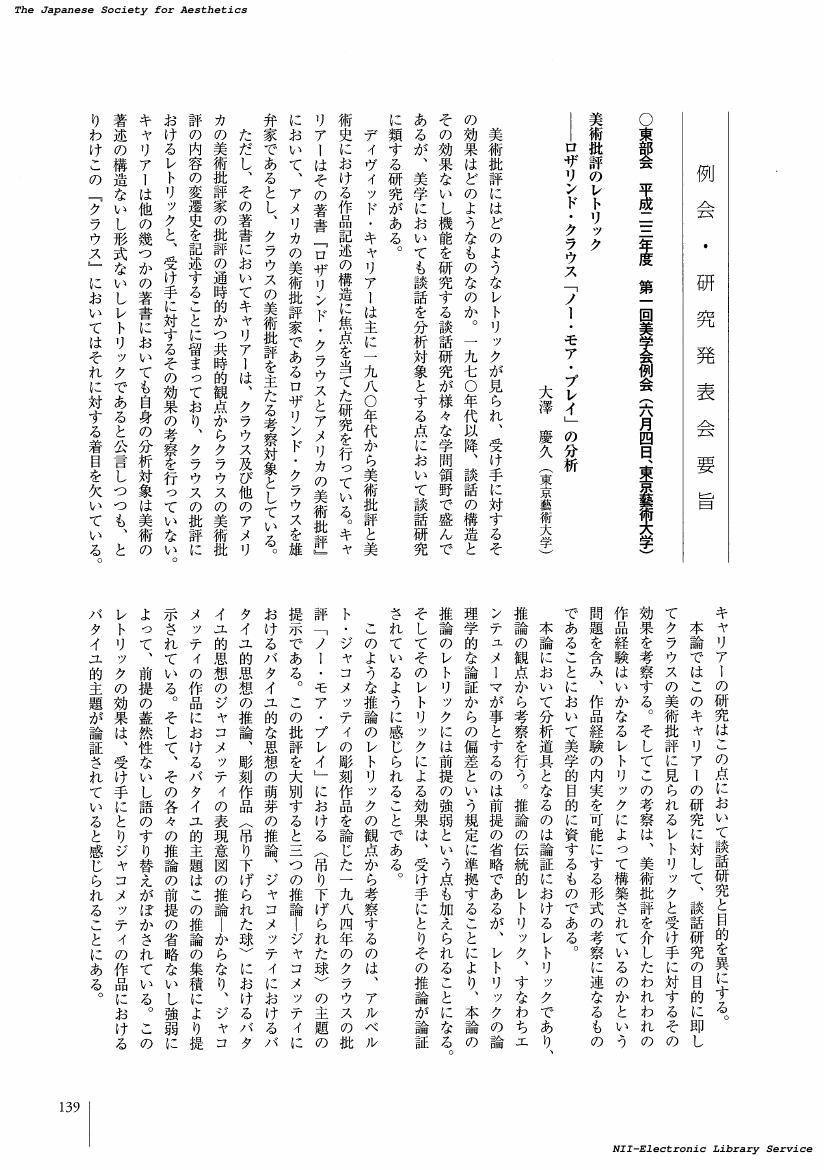- 著者
- 大澤 慶久
- 出版者
- 美学会
- 雑誌
- 美学 (ISSN:05200962)
- 巻号頁・発行日
- vol.71, no.2, pp.109-120, 2020 (Released:2023-02-06)
From the late 1960s, photograph, video, magazine, and Xerox came to be used in the realm of contemporary art. Under the circumstances, traditional value of originality of artworks will be dissolved as long as the original is infinitely copied in theory. This paper provides a new interpretation of Jiro Takamatsu’s Japanese Letters and English Words, on the basis of the issue of original and copy of artworks in the era of duplicate media. In Japanese Letters “ko-no-nana-tsu-no-mo-ji” is written. In English Words “THESE THREE WORDS” is written. These two are print works by offset lithography. Each work has 100 editions and each of those original plates are manipulated by Xerox. First, I survey preceding interpretations of these works, on the basis of those formal features. Second, I analyze them. Finally, this paper concludes as follows: Japanese Letters and English Words urge the beholder to have an individual or unique relationship although every edition has almost same appearance by duplicate media of print. That Takamatsu uses artform of print and these works have such structures implies that he has the awareness of issue that the individual or unique relationship of human and things is inhibited in the era of duplicate media.
1 0 0 0 OA 高松次郎「複合体」シリーズ そのドローイングとの関連性より
- 著者
- 大澤 慶久
- 出版者
- 美学会
- 雑誌
- 美学 (ISSN:05200962)
- 巻号頁・発行日
- vol.69, no.2, pp.70, 2018 (Released:2020-03-23)
1 0 0 0 OA 高松次郎《題名》における同時代性と独自性 もの派との比較より
- 著者
- 大澤 慶久
- 出版者
- 美学会
- 雑誌
- 美学 (ISSN:05200962)
- 巻号頁・発行日
- vol.67, no.2, pp.82, 2016 (Released:2018-01-01)
- 著者
- 大澤 慶久
- 出版者
- 美学会
- 雑誌
- 美学 (ISSN:05200962)
- 巻号頁・発行日
- vol.62, no.2, pp.139, 2011-12-31 (Released:2017-05-22)


